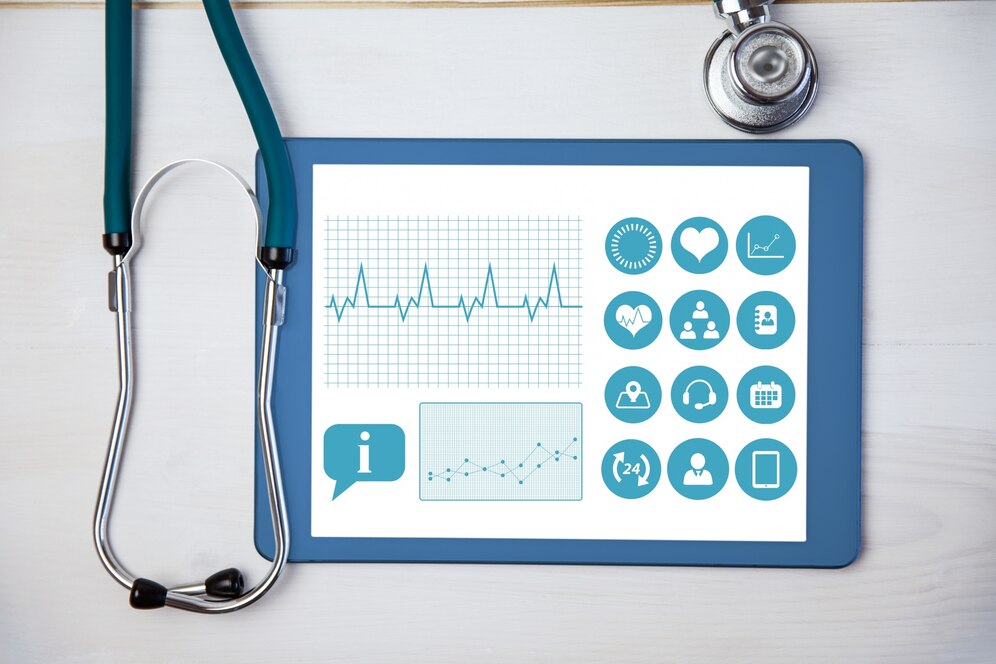In the dynamic landscape of healthcare operations, understanding the KPIs that drive success in RCM is paramount. As you navigate the intricate web of patient care, billing, and financial management, these KPIs offer you insights into the health of your operations. By monitoring KPIs, you make informed decisions about where your efforts are yielding results.
This blog will take you on an in-depth journey through the essential KPIs that will equip you with the knowledge necessary to enhance financial performance, operational efficiency, and patient satisfaction.

A Key Performance Indicator (KPI) is a measurable metric that reflects your business’s performance in achieving specific goals. KPIs provide essential insights into your healthcare providers’ progress and help you track the effectiveness of your strategies.
KPIs serve as benchmarks to measure your success against predefined objectives. By monitoring KPIs, you gain a clear understanding of where your efforts are yielding results. With these quantifiable indicators you can make informed decisions to enhance your overall performance.
Whenever we delve into RCM healthcare operations, our focus is always towards KPIs. Together, we’ll uncover insights for financial performance, operational efficiency and patient satisfaction with RCM KPIs.

Moving towards Financial Performance KPIs, let’s explore the influencing revenue cycle management KPIs. These indicators lighten your financial health and operational efficiency, guiding informed decisions.
Your days in accounts receivable (DAR) KPI indicates the average number of days it takes for your healthcare providers to collect payments after providing services. A lower DAR suggests efficient billing and collection processes, while a higher DAR may indicate delays.
DAR KPI helps you optimize cash flow and identify areas for process improvement. Regularly tracking and managing your DAR allows you to maintain a healthy financial cycle and ensures timely revenue collection.
The Net Collection Rate (NCR) measures the effectiveness of your revenue collection efforts by calculating the percentage of billed amounts you successfully collect. NCR with high value indicates strong collection performance, while a lower rate highlights potential issues.
With NCR, you can assess your billing and collection strategies, refine your processes, and address challenges that impact yourRCM stream. By striving for an optimal NCR, you can maximize your RCM and ensure healthcare revenue cycle KPIs.
It’s easy for you to evaluate the percentage of claims submitted to payers without errors or discrepancies by clean claim rate. A higher clean claim rate indicates accurate and efficient billing processes, leading to quicker reimbursement.
Monitoring this KPI helps you identify patterns of errors, streamline your claims submission process, and reduce claim rejections. Achieving a high clean claim rate enhances revenue cycle efficiency and minimizes disruptions in your reimbursement flow.
The Denial Rate KPI measures the percentage of claims that are initially denied by payers. Tracking this metric helps identify patterns and root causes behind claim denials. When you face a lower denial rate that reflects effective claims management and submission accuracy.
Monitoring KPIs helps you uncover reasons for claim denials, allowing you to address root causes and improve your revenue cycle KPIs. By reducing denial rates, you can enhance cash flow, expedite reimbursement, and optimize your revenue collection process.

With the deep attention to operational efficiency KPIs, we will examine how optimized processes enhance revenue cycle management. These not just provide operational effectiveness but also drive smoother workflows and financial outcomes.
Your operational efficiency KPIs include the first pass resolution rate (FPRR). This metric indicates the percentage of claims that are accepted and paid upon initial submission. With FPRR You can streamlined billing processes and accurate claim submissions.
Regular check and balance of this can help you identify areas for improvement in claim accuracy and submission. It leads to higher reimbursement and reduced administrative burden. By focusing on improving your FPRR, you can enhance RCM efficiency and optimize your revenue cycle operations.
The average reimbursement rate is an operational efficiency KPI that calculates the average amount you receive from payers per claim. This metric helps you assess the effectiveness of your reimbursement strategy and identify discrepancies.
Just not, average reimbursement rate allows you to evaluate payer contracts, negotiate better terms, and optimize your revenue stream. By aiming for an optimal average reimbursement rate, you can ensure fair compensation for your services and maintain financial stability.
As the operational efficiency KPIs include the claim rejection rate, which indicates the percentage of claims rejected by payers. A lower claim rejection rate reflects accurate billing practices and streamlined claims submissions.
You have the opportunity to uncover patterns of claim rejections, enabling you to address root causes and improve your RCM KPIs. By reducing claim rejection rates, you can expedite reimbursement, minimize disruptions, and enhance your overall operational efficiency.
The Claim Cycle Time KPI measures the average time it takes to process and receive reimbursement for a claim. These key metrics allow you to evaluate the efficiency of your claims processing workflow.
A shorter claim cycle time suggests faster reimbursement and efficient operational KPIs in healthcare. By optimizing your claim cycle time, you can enhance cash flow, reduce administrative overhead, and ensure timely revenue collection.

When it comes to patient Satisfaction KPIs, we always prefer gauging patient-centered excellence. You can evaluate billing interactions, patient engagement, and overall contentment comprehensively.
Evaluating patient billing satisfaction indicates how content patients are with your billing procedures. When this KPI reflects a higher satisfaction rate, it signifies that patients understand their bills and the billing communication is clear.
Consistently tracking this metric, you can pinpoint specific areas that require improvement, leading to an enhanced patient experience. Through this, healthcare providers can promote a sense of trust in their services.
The measurement of patient payment turnaround time gauges how promptly patients settle their bills. The shorter turnaround time indicates the effectiveness of your billing and payment posting, positively influencing your cash flow.
With this, you can optimize payment methods, encourage timely payments, and maintain a healthier financial cycle. With a swift payment turnaround time, you can not only enhance your operational efficiency. But also provide patients with a convenient and seamless billing experience.
The patient follow-up interaction rate gauges the percentage of patients engaging in follow-up interactions after receiving billing information. With a higher interaction rate, you can suggest patients seeking clarification or assistance.
Through vigilant tracking, you can acquire invaluable insights into patient feedback and grasp their concerns for insurance eligibility more effectively. It also lets you fine-tune your communication channels, ensuring patients receive the necessary information for a smoother billing experience.
Quantifying billing-related patient complaints allows you to promptly address and resolve medical coding issues. You can proactively identify areas for improvement in your billing procedures, reducing the chances of patient dissatisfaction.
KPIs offer valuable insights for improvement, driving better outcomes and patient relationships. Lower complaint rates indicate that your billing practices are accurate and patient-friendly. This boosts patient satisfaction and contributes to a positive reputation for your healthcare KPIs providers.
Key Performance Indicators (KPIs) serve to assess the effectiveness of your healthcare provider’s revenue cycle management strategies. With KPIs, healthcare providers can gain insights into RCM, financial health, and patient satisfaction.
Discover the transformative capabilities of CloudRCM, a premier partner in achieving RCM excellence in healthcare operations. With our exceptional services, you can optimize your RCM journey with critical KPIs. Contact us today, as we are here to provide you a streamlined, efficient, and successful RCM experience.
In Revenue Cycle Management (RCM), a KPI is a quantifiable measurement evaluating operational performance and financial success. These metrics provide insights into revenue generation, efficiency, and overall RCM effectiveness.
A KPI for revenue and profit is a performance indicator that assesses your healthcare provider’s financial health. With this, you can find KPI measurement that is effective for revenue generation strategies, profit margins, and overall business growth.
In medical billing, a KPI is a measurable metric that evaluates the efficiency and accuracy of billing processes. KPIs can gauge the effectiveness of claims submission, reimbursement rates, and billing cycle times.
KPIs are crucial in the revenue cycle as they clearly understand your financial performance. You can also track progress, identify areas for improvement, make informed decisions, and ensure sustainable revenue growth.
Common revenue cycle metrics include Days in Accounts Receivable (DAR), Net Collection Rate (NCR), Clean Claim Rate, Denial Rate, Claim Rejection Rate, and Claim Cycle Time. These metrics offer insights into billing efficiency, reimbursement effectiveness, and operational performance.
The three types of KPIs are Outcome, Process, and Leading indicators. Outcome indicators measure the result, Process indicators assess workflow efficiency, and Leading indicators offer predictive insights into future performance.
A KPI example is Patient Satisfaction, measured through surveys or feedback, reflecting the quality of patient experiences and services. The other one is Net Promoter Score (NPS) measures customer satisfaction through surveys, indicating the quality of services and customer experiences.
A good KPI is relevant to your goals, measurable, actionable, and aligned with your healthcare providers’s objectives. It provides a clear understanding of progress and areas that need improvement.

Revenue Cycle Management (RCM), the method for handling healthcare claims adjudication, is the revenue generator for